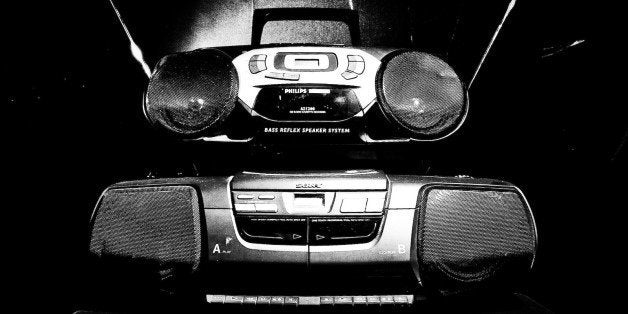
Last Thursday, Norway's Ministry of Culture announced that it would shut down traditional FM radio networks in favor of higher-quality digital broadcasts beginning in 2017. It is the first country to announce such plans.
Don't expect the United States to follow suit -- at least, not anytime soon.
Christina Dunbar-Hester, an assistant journalism professor at Rutgers University and author of Low Power to the People, a book about FM radio activism, told The Huffington Post that Norway is uniquely positioned to make the transition from traditional, analog FM broadcasts to digital ones.
"Norway is sparsely populated, mountainous, and wealthy," she explained via email. "FM doesn't work as well with that terrain and is relatively expensive to operate to reach everywhere in the country, so the economic investment in switching standards might be an easier sell there."
In the U.S., AM and FM radio reach 243 million people weekly. That's far more than in Norway, a country of roughly 5 million.
Switching to digital may be a bit of a hassle because it requires new equipment, but there are benefits, like higher-quality audio and a greater number of available channels. In the U.S., certain broadcasters have used digital methods for years. It's called IBOC, meaning "in-band on-channel," though it's popularly known by the trademark HD Radio -- kind of like how you probably call every tissue you use a "Kleenex."
Dennis Wharton, executive vice president of communications for the National Association of Broadcasters, told HuffPost that many major stations -- the giants like KIIS-FM in Los Angeles -- have transmitted in HD radio for about a decade. About 21 percent of all FM radio stations in the U.S. today transmit digitally, he said, and most new cars have the ability to receive HD radio.
The problem is, powerful broadcasters and new stereo systems are only part of the conversation. Radio stations in small towns, for example, may still broadcast on analog FM -- precisely what Norway is phasing out -- and some people may not have the equipment to receive anything else, anyway.
"We're talking about [areas] smaller than Peoria in Illinois," Wharton explained in a phone interview. Peoria's population is around 116,000 people.
"These stations are actually operating on profit margins that are not very high," he continued. "To make an investment in digital radio... it's just a financial decision they can't maybe abide yet."
To be fair, it's not totally out of the question. A very similar transition happened in the U.S. with the advent of digital television. As of 2009, all "full-power" television stations are required to broadcast digitally in the U.S. There are many benefits: Picture quality is higher, programming sounds better, more channels are available and companies can provide broadband to customers.
The switch to digital radio in the U.S. would bring similar benefits, Wharton said, but there are bigger issues to tackle first.
"It's just difficult to get public policymakers to support something like that unless everybody in various industries agrees," he said.
Instead of fighting that battle, the National Association of Broadcasters is turning its attention elsewhere. Digital radio, for all its benefits, is not likely to be mandated anytime soon, and there's another battle for analog radio brewing in the 21st century. Wharton said he wants to get American cell phone carriers to enable analog FM chips that are already built into many smartphones -- including the iPhone 6 and Samsung Galaxy S5 -- but are turned off in phones that are sold in the U.S.
"Wireless carriers block the activation of that device because they'd prefer you listen to streamed programming," Wharton said. "It helps them if you bump up against your data plan for the month."
It's certainly true that wireless carriers capitalize on people who go over their data plans and that online listening has seen strong growth over the past couple of years. The FM chips in phones, which receive analog rather than digital broadcasts, would allow smartphone owners to listen to music or newscasts without using their data.
The bottom line? In 2015, traditional radio is worth a bit more than you might expect, and it's probably not going anywhere.
